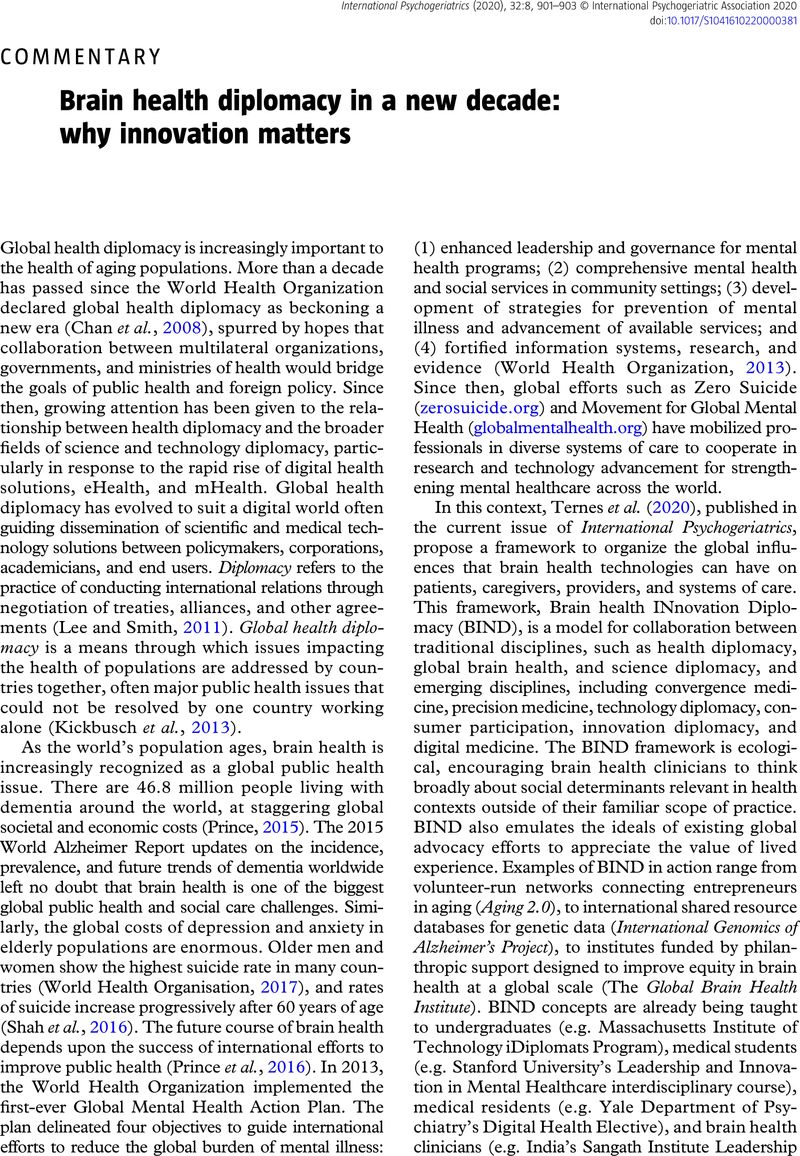Ternes, K.,
Iyengar, V.,
Lavretsky, H.et al. (
2020).
Brain health INnovation Diplomacy (BIND): a model binding diverse disciplines to manage the promise and perils of technological innovation.
International Pyschogeriatrics,
32,
955–
979. doi: 10.1017/S1041610219002266.
CrossRefGoogle Scholar 